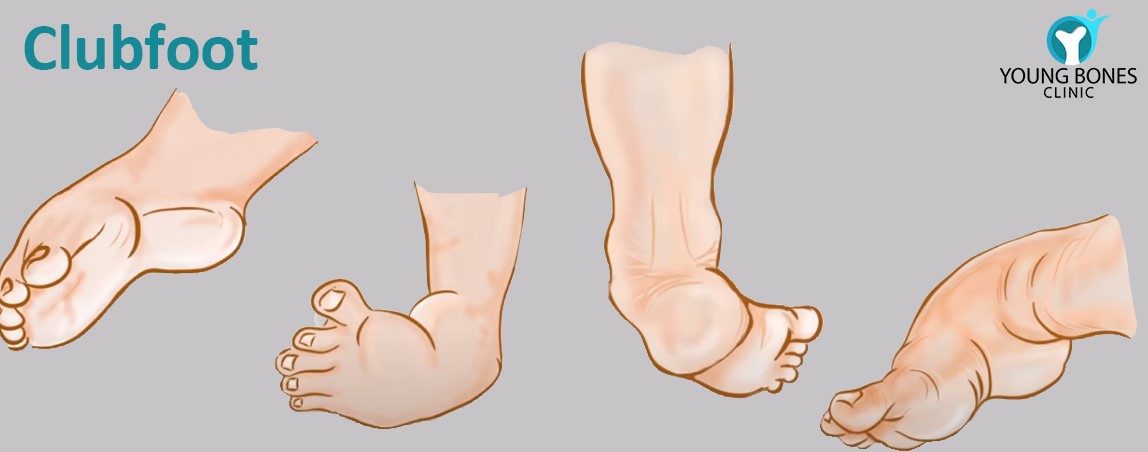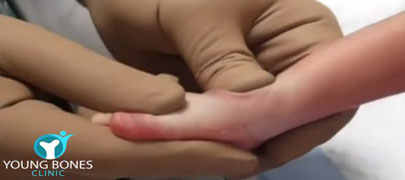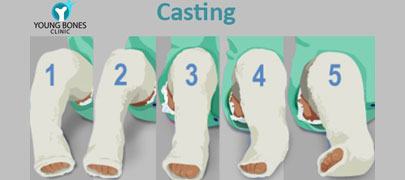Welcome to our Young Bones Clinic
Parents with babies having Clubfoot need to take extra care of their child.
At Young Bones Clinic, our dedicated orthopedist in Gurgaon, Delhi is an expert in providing effective Clubfoot treatment for Clubfoot for people in and around Gurgaon, Delhi.
In this article, we will explain to you everything about Clubfoot.
So Stay Tuned!
Clubfoot is a congenital deformity in which an infant’s foot is twisted out of shape inward or upward. It is the most common deformity of the bones and joints in newborns. It can be mild or severe and occur in one or both feet.

Approximately one newborn in every 1,000 live births will have clubfoot. In clubfoot, the tendons that connect the leg muscles to the foot bones are short and tight, causing the foot to twist inward.
The cause of clubfoot (Idiopathic type) is not exactly known, but it is most likely multifactorial and no single reason has been identified.
A trained pediatric orthopedic surgeon is the best doctor to treat this condition. At Young Bones Clinic, we have a well-trained and qualified pediatric orthopedic surgeon in Gurgaon, Dr. Ratnav Ratan. He is one of the best surgeons for clubfoot treatment in Gurgaon, Delhi with more than 13 years of experience. He pays complete attention to smaller details to avoid complications and get normal, painless feet until the child starts walking.
At our clinic, most clubfoot cases are successfully treated with non-surgical methods that include a combination of initial stretching, weekly casting, and finally bracing.

Gentle and slow movements and stretches of the foot help to move the abnormal foot into the correct position.

A baby wears a plaster cast that gently moves the abnormal foot into the correct position.

It is a device that consists of two boots connected to a metal bar. It is fixed on the foot to keep it in the correct position.
Treatment usually begins after birth within 5 to 7 days, provided the baby is healthy and mature enough. In premature birth or extremely low birth-weight babies, only stretching is done until the casting is safe for the baby.
Step by step procedure of the Ponseti technique
This technique is highly successful for children with clubfoot in Gurgaon, Delhi, and avoids any extensive surgeries.
The treatment goal is to obtain a functional, pain-free foot that enables standing and walking with the sole area of the foot on the ground. The younger the age at which the treatment is initiated, the sooner and better the cure.
Surgery may rarely be required in cases where:
A tendon transfer is most frequently required if the child is showing signs of a hyperactive tendon, causing inward movement of the feet while walking.
The technique is safe, provided the critical steps are diligently followed.
The overall outcome of clubfoot for a baby to have a normal life
Book an appointment with our surgeon in Gurgaon if you are concerned about your child’s clubfoot.